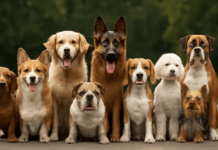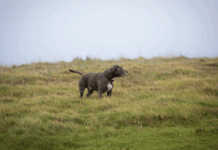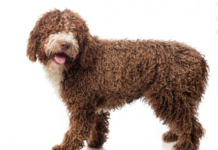Last Updated on October 12, 2022 by Dogs Vets
Types of Dogs: List of Dog Breeds
The wolf is the ancestor of the domesticated dog, often known as the canine.
The dog’s closest living relative is the contemporary wolf, which is also known as the domestic dog. The dog is descended from an ancient wolf that has since become extinct.
Dogs were the first animals to be tamed and domesticated by early hunter-gatherer societies more than 15,000 years ago, prior to the emergence of agriculture.
The Dog’s Scientific Name and their Rich Past
One of the earliest creatures that prehistoric humans domesticated was the canine species, which includes dogs.
The wolf was eventually domesticated, and its offspring are today’s dogs.
The scientific name of a dog can be either Canis familiaris or Canis lupus familiaris, depending on the breed. The following are the two scientific names for dogs:
The family Canidae, often known as the dog-like carnivorans or canids, is where dogs are classified, whereas the genus Canis, which literally translates to “dog,” is home to wolves, dogs, coyotes, and jackals.
Their subfamily is known as Caninae, which literally translates to “canines,” while their tribe, Canini, is known as the “real dog” tribe, and their subtribe, Canina, is home to the wolf-like canids.
Dog Qualities and Traits
All dogs belonging to the genus Canis share a set of defining physical traits in common.
Canis is a genus under the family Canine that include a number of living species, including dogs, wolves, coyotes, and golden jackals, among others.
The species that belong to this genus can be identified by their moderate to large size, their huge and well-developed skulls and teeth, their long legs, and their relatively small ears and tails.
Canines are distinguished from other mammals by a number of characteristics, including their behavior, bone structure, and ability to reproduce.
To differentiate themselves from wolves, dogs have a number of distinct qualities that set them apart. Some of these distinguishing characteristics can help you establish whether a canines in question is a dog or a wolf.
Dog Teeth
Dogs are descended from wolves and have a tooth pattern that is indicative of their carnivorous diet due to the fact that dogs have wolf-like ancestry.
Their teeth are pointed and were developed specifically for tearing apart and chewing meat.
Because of their resemblance to the canine teeth of other animals, many people refer to these four teeth as their “canines.” One of the most obvious characteristics of a dog is its set of teeth.
The majority of canids, or animals belonging to the family Canidae, have 42 teeth.
What Kind of Food Do Dogs Eat? Dog Diets Explained
Because they are derived from wolves, dogs are carnivores with a biology that is optimized for a diet consisting primarily of meat. However, only a small percentage of dogs kept as pets today consume only meat.
The price of modern dog food is significantly lower than that of a diet consisting just of meat, and it provides a greater variety of nutrients.
Meat, grains, and vegetables are typically combined with vegetables and other ingredients to create dog food in today’s world.
Many types of meat, including fish, chicken, venison, cattle, and hog, are typically utilized in the preparation of dog food.
Potatoes, peas, carrots, and possibly even other vegetables are frequently added to the mix when these meats are prepared.
There are many different kinds of dog food available, and the one you pick should depend on the dietary requirements of your pet.
There are foods that can assist your canine companion in putting on weight, as well as foods that can assist them in shedding excess pounds.
There are even dog foods for allergies. Many owners begin by deciding whether their dog prefers wet or dry food first, and then move on from there.
The following are some of the greatest options available for dog food:
Dog features
Even wolves don’t have as much behavioral and physical variety as dogs do. Dogs have more variety than any other land mammal, including wolves.
Red blood cell acid phosphatase can be seen in the starch gel electrophoresis of canine blood. They also have tymphanic bullae that are folded and crushed to a smaller size. They have a more rounded forehead, and there is a “pause” between the bridge of their nose and the top of their head.
Wolves differ from other canids in that their temporalis muscles, which are responsible for closing their jaws, are more pronounced, and they lack dewclaws on their hind legs.
Dogs do not have a pre-caudal gland, which causes them to enter estrus twice a year rather than just once.
Wolves typically have yellow or light-colored eyes, in contrast to the brown eyes that dogs typically have. They have tougher skin, and their paws are only about a third of the size of those of wolves.
Begonias, Poinsettias, and Aloe Vera are just a few of the common houseplants that might be harmful to dogs.
Chocolate, onions, garlic, macadamia nuts, xylitol, and nicotine are just few of the many human foods that dogs cannot digest and may even be poisonous to them.
Dogs, on the other hand, are omnivores and can make do with a diet that contains more starch than a wolf, which adheres more rigidly to a carnivorous diet.
Exceptions Regarding Dogs
There are a few different tribes that belong to the Caninae subfamily.
Canini, the tribe that resembles dogs, is related to Vulpini, the tribe that resembles wolves.
They belong to the suborder Caniformia or the Canoidea, which are carnivoran groups that resemble dogs. It is a striking contrast to the carnivorans that resemble cats, which belong to the Feliformia or Feloidea suborder of the Carnivora.
Various Type of Dog Breeds
It is possible to divide dogs into a number of distinct groups according on the tasks for which they were originally bred:
Sporting dogs
The original purpose of sporting dogs was to assist their hunters in capturing and retrieving game birds. While setters, spaniels, and pointers specialize on hunting game birds, retrievers are water dogs who swim and hunt waterfowl.
Their outer layers, which provide as protection against the weather, are typically dense and water-repellent.
Golden Retrievers, Labrador Retrievers, Nova Scotia Dock Tolling Retrievers, Cocker Spaniels, and German Shorthaired Pointers are all examples of sports dog breeds. Other examples include the Cocker Spaniel.
Hound dogs
Hound dogs were developed specifically to hunt terrestrial animals with a warm body temperature.
Scent hounds are able to use their noses to track raccoons and people, while sighthounds utilize their speed and vision to pursue prey such as jackrabbits and antelopes.
In general, they are classified into two categories: sighthounds and scent hounds.
All these dogs possess a powerful instinct to hunt prey. Breeds such as the Bloodhound, the Greyhound, and the Dachshund are all examples of hound dogs.
Working dogs
Dogs that were bred specifically for the purpose of performing work, such as protecting families or pulling sleds and carts, are known as working dogs.
There are many different breeds of working dogs, but some examples include the Boxer, the Great Dane, and the Rottweiler.
Herding dogs
Along with service dogs, herding dogs are considered to be a sort of working dog.
Service dogs assist individuals who have disabilities, just as herding dogs assist with the management of livestock. They are distinct from other dogs, though, in that they were developed for the purpose of herding livestock like as sheep, cattle, and reindeer.
Some of them are very well suited for jobs in the military and the police. Herding dogs come in a wide variety of breeds, including the Border Collie, the German Shepherd, and the Icelandic Sheepdog.
Terrier dogs
Terrier dogs were designed to be small so that they could go after rodents and other pests that lurked underground. They include “bully” breeds, which were once employed for bull-baiting but today make excellent companion dogs due to their strong legs and ability to dig out rat burrows.
Terrier breeds are also included among these. Terrier dog breeds include, but are not limited to, the Bull Terrier, the Scottish Terrier, and the Welsh Terrier.
Curly coats are characteristic of certain terrier breeds, such as the Airedale Terrier, the Kerry Blue Terrier, and the Irish Terrier.
Toy dogs
Toy dogs were developed specifically to be kept as companion animals due to their diminutive size. They are an excellent choice for people who reside in cramped quarters or homes of any size. Breeds such as the Chihuahua, Pug, and Shih Tzu are all examples of toy dog breeds.
Non-sporting dogs
Companion animals, such as dogs that were not developed for competition in any sport, do not fall into any of the other categories of dog groups.
Non-sporting dogs include a variety of breeds such as the Bulldog, Dalmatian, and Poodle, among others.
When you go hiking, you have the option of renting a dog that is trained to defend its human from potentially harmful animals, such as mountain lions.
Dog-wolf hybrids
Dogs and current wolves descended from the same progenitor in the distant past. Malamutes and huskies are only two examples of the many huge dog breeds that have been crossed with wolves.
Some of these dogs are desired by private individuals, while others have been put to use in security-related activities.
Producing instance, in the late 1990s the Russian government started a breeding program for wolf-dog hybrids that they termed Volkosoby or Volkosob.
These animals are utilized for patrolling Russia’s borders. Here is a list of eight dogs that have the appearance of wolves.
Facts Check
We hope you enjoyed this article… What are your thoughts?
Please feel free to share this article!

















